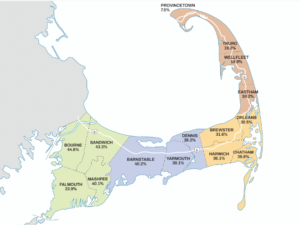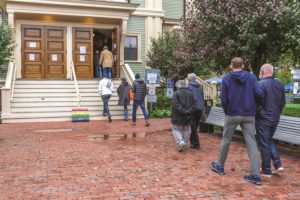This article was updated on Nov. 7 to include preliminary election results from Truro.
PROVINCETOWN — An anxiety-provoking presidential election contest came to an anxious end on the Outer Cape on Tuesday night, as Democrats and Republicans watched election returns. Preliminary tallies showed that little has changed in the Outer Cape towns since the 2020 contest between then-President Trump and Joe Biden.


